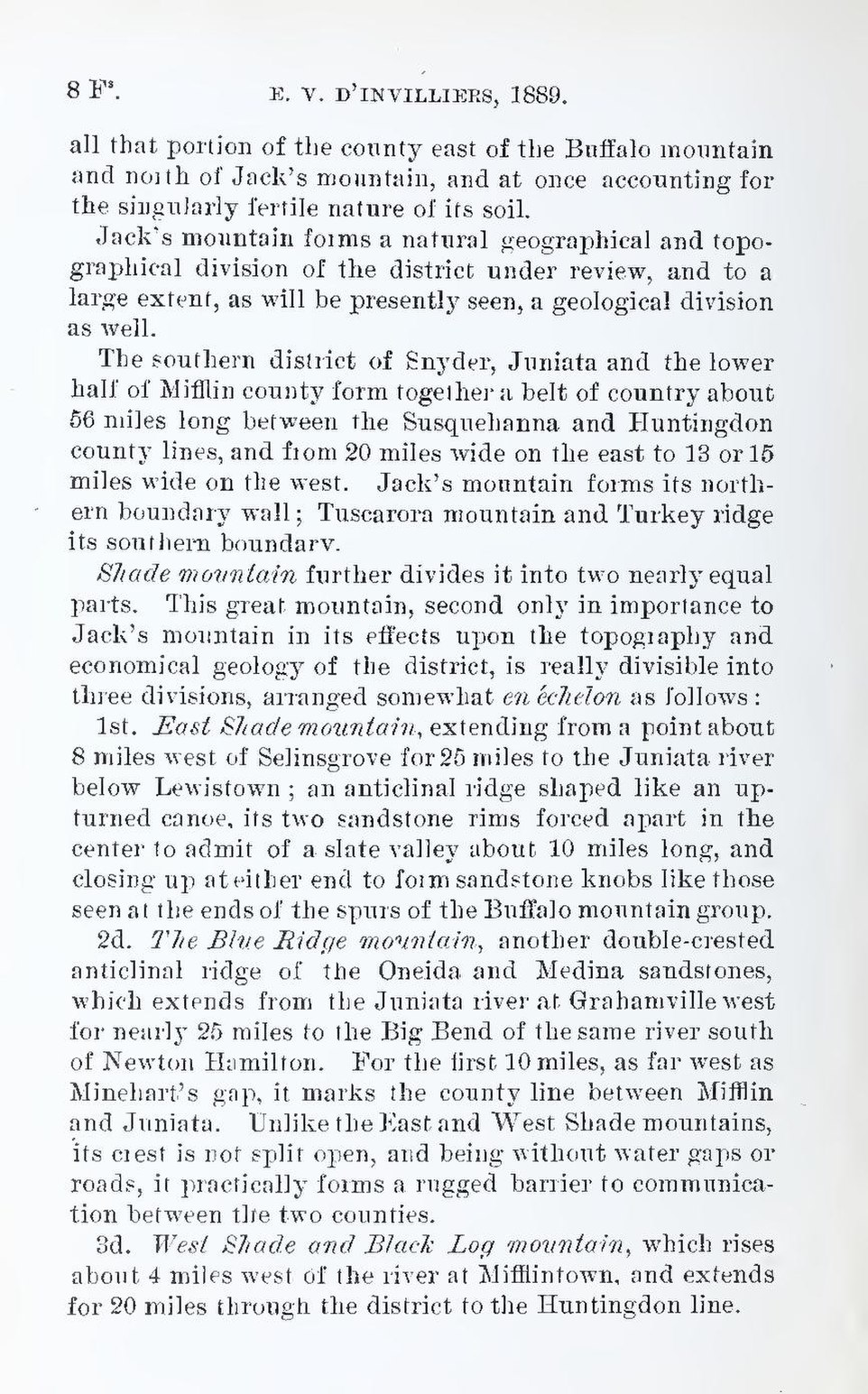all that portion of the county east of the Buffalo mountain and north of Jack’s mountain, and at once accounting for the singularly fertile nature of its soil.
Jack’s mountain forms a natural geographical and topographical division of the district under review, and to a large extent, as will be presently seen, a geological division as well.
The southern district of Snyder, Juniata and the lower half of Mifflin county form together a belt of country about 56 miles long between the Susquehanna and Huntingdon county lines, and from 20 miles wide on the east to 13 or 15 miles wide on the west. Jack’s mountain forms its northern boundary wall; Tuscarora mountain and Turkey ridge its southern boundary.
Shade mountain further divides it into two nearly equal parts. This great mountain, second only in importance to Jack’s mountain in its effects upon the topography and economical geology of the district, is really divisible into three divisions, arranged somewhat en échelon as follows:
1st. East Shade mountain, extending from a point about 8 miles west of Selinsgrove for 25 miles to the Juniata river below Lewistown; an anticlinal ridge shaped like an up-turned canoe, its two sandstone rims forced apart in the center to admit of a slate valley about 10 miles long, and closing up at either end to form sandstone knobs like those seen at the ends of the spurs of the Buffalo mountain group.
2d. The Blue Ridge mountain, another double-crested anticlinal ridge of the Oneida and Medina sandstones, which extends from the Juniata river at Grahamville west for nearly 25 miles to the Big Bend of the same river south of Newton Hamilton. For the first 10 miles, as far west as Minehart’s gap, it marks the county line between Mifflin and Juniata. Unlike the East and West Shade mountains, its crest is not split open, and being without water gaps or roads, it practically forms a rugged barrier to communication between the two counties.
3d. West Shade and Black Log mountain, which rises about 4 miles west of the river at Mifflintown, and extends for 20 miles through the district to the Huntingdon line.
